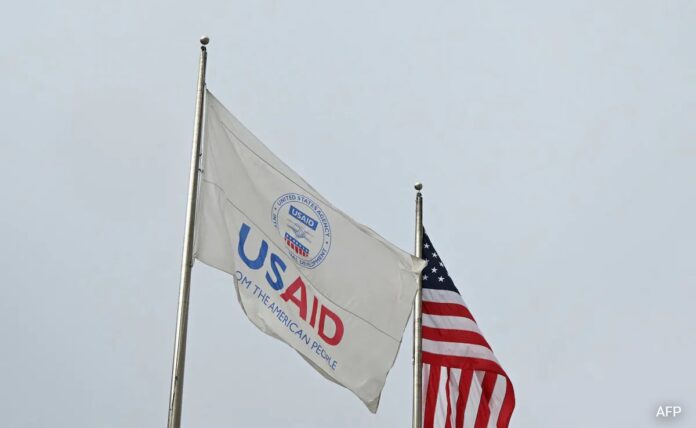If not for the newly created Department of Government Efficiency (DOGE), headed by Elon Musk, the public might not have known that, ahead of the 2014 parliamentary elections in India and beyond, the American establishment was funneling large sums of dollars for “voter turnout” initiatives among marginalised communities in India.
The question arises: what was the purpose of this funding, and whose interests was it serving? What stake does the United States have in India’s elections and the voter turnout of specific demographics?
US President Donald Trump’s statement on this issue deserves serious attention. He remarked that USAID’s spending in Indian elections was not an effort to promote democracy but rather to restrict it. “Why do we need to spend $21 million on voter turnout in India? I guess they were trying to get somebody elected. We’ve got to tell the Indian government… This is a total breakthrough.”
Although USAID’s involvement in India dates back to the 1960s, its focus has shifted over time—from food security to governance reforms. Since 2011, its Democratic Elections and Political Processes (DEPP) programme has allocated over $318,614 annually to the Consortium for Elections and Political Process Strengthening (CEPPS) for India-specific projects.
Financial disclosures reveal that CEPPS disbursements peaked during election years. In FY2014, $21 million—equivalent to ₹182 crore at today’s exchange rate—was sent to India for “voter awareness” campaigns. These funds were distributed monthly from January to May, coinciding exactly with the national election campaign. After May 2014, funding dropped by 83%, suggesting that the objective was electoral rather than institutional. A similar pattern occurred in 2019, with $486 million allocated regionally. Fortunately, cautious Indian agencies blocked portions of these funds, citing violations of the Foreign Contribution Regulation Act (FCRA).
Some observers draw parallels between USAID’s allocations to India and the $29 million designated for “strengthening the political landscape” in Bangladesh. Recent events in Bangladesh have shown how that landscape was “strengthened.” In contrast, India has remained stable and democratic, largely because citizens believed in Prime Minister Narendra Modi’s intent and governance, despite repeated attempts to manufacture public unrest on various issues.
Additionally, USAID awarded over $750,000 for a programme aimed at “alleviating loneliness among migrant garment workers in India”. This raises pertinent questions: who were these so-called migrant workers? How exactly was this programme supposed to alleviate their loneliness? There are multiple theories about the potential beneficiaries and the underlying objectives.
Another critical issue is the Election Commission of India (ECI) signing a Memorandum of Understanding (MoU) with the US-based International Foundation for Electoral Systems (IFES) in 2012 during the tenure of the Sonia Gandhi-Manmohan Singh-led UPA government.
Former Chief Election Commissioner (CEC) S.Y. Quraishi has acknowledged the agreement with IFES but denies that the ECI received any funds from USAID. He insists that the MoU was similar to agreements signed with other international election bodies and was intended for training purposes at the ECI’s India International Institute of Democracy and Election Management (IIIDEM).
However, analysing Quraishi’s statement reveals an important distinction. No one is alleging that the ECI itself received USAID money. Instead, funds were channelled through multiple NGOs, both Indian and foreign. While Quraishi describes the IIIDEM training programme as catering to “desirous countries”, leaked audits indicate that USAID’s explicit focus was on “increasing voter participation in marginalised communities”—a goal that critics argue aligns with domestic political agendas.
A Closer Look at IFES and IIIDEM
According to IFES’s website, “The Open Society Foundations, founded by George Soros, are the world’s largest private funder of independent groups working for justice, democratic governance, and human rights. They provide thousands of grants annually through a network of national and regional foundations and offices, funding a vast array of projects.”
Reports indicate that IFES’s India operations received dual funding from USAID and major tech corporations—Google, Meta, and Microsoft—between 2012 and 2025. While this public-private funding model is innovative, it also creates conflicting interests.
The ECI established IIIDEM in 2011, shortly before signing the MoU with IFES. Training modules at IIIDEM reportedly emphasised “inclusive electoral practices” and “Dalit voter mobilisation”.
A 2013 IFES policy paper advocated for caste-based voter categorisation, a stance that was later echoed by opposition parties in parliamentary debates by 2016. This culminated in Congress leader Rahul Gandhi’s politically charged slogan, “Jitni Abadi, Utna Haq” (As per population, so should be the rights).
Following the revelations by DOGE regarding USAID’s outbound funding, senior country director of IFES for India and Nepal, Vasu Mohan, deleted his X (formerly Twitter) account.
This raises a question: is there a connection between Rahul Gandhi’s statements on Western soil, where he claimed that democracy in India is being “undone”, and his appeals for American and European intervention?
The information revealed by DOGE and subsequent actions raise serious concerns about foreign influence in India’s electoral processes. The alignment of USAID funding patterns with election cycles, the focus on specific voter demographics, and the involvement of foreign organisations suggest a deliberate effort to shape political outcomes. These revelations warrant deeper investigation and transparency from all parties involved.
(The author is Consulting Editor, NDTV)
Disclaimer: These are the personal opinions of the author




